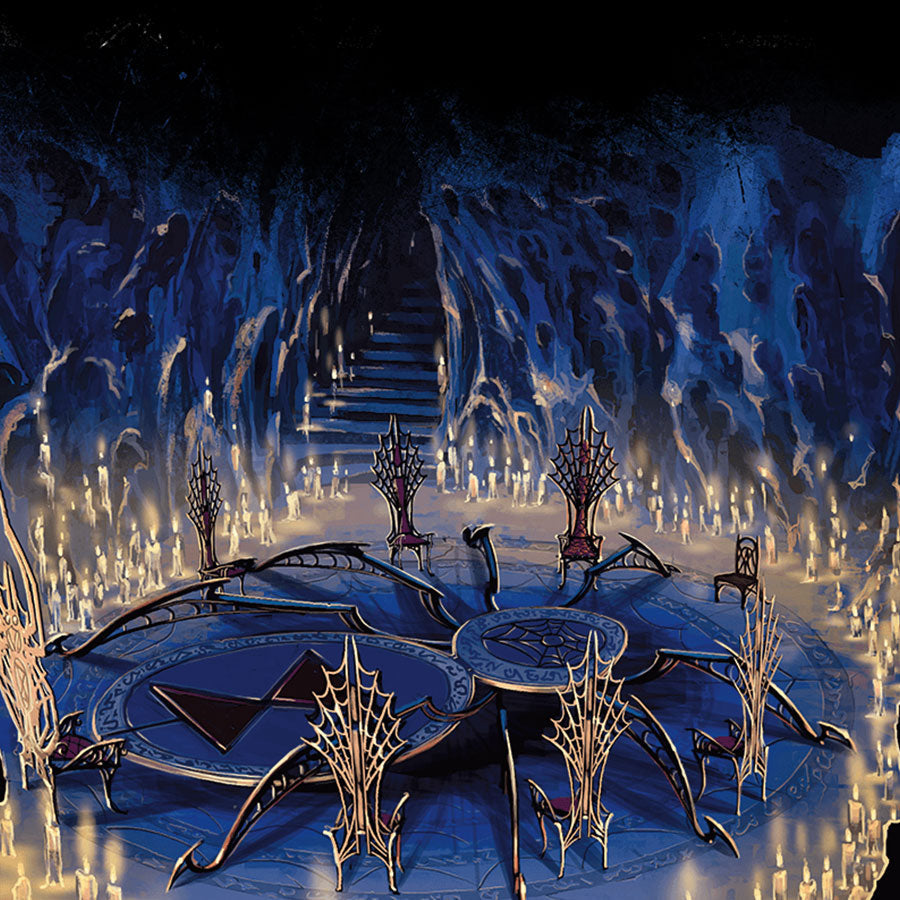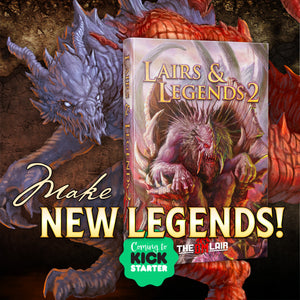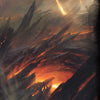5 Ways Every Dungeon Master Cheats

Written by Luke Hart
We had the bandit leader surrounded—no escape, no tricks left up his sleeve. I grinned, raising my sword for the final blow. However, before I could roll, the GM cleared his throat. “Uh… you hear a loud BOOM!” he said. He scribbled something behind the screen, and then continued, “A hidden tunnel collapses behind the bandit leader, revealing an escape route he had planned all along.”
As players, we all just stared. None of us had spotted a tunnel when we searched the area before. None of us had heard any hint of it before. But there he went, vanishing into the darkness as though the GM had just written the escape tunnel into existence five seconds ago.
Because, well, he had.
Hello folks, welcome to the DM Lair! I’m Luke Hart, and on this blog, I share my nearly 30 years of game master experience so that you can run amazing games that your players will love.
And today we’re talking about 5 ways game masters cheat, because the fact is, YOUR game master cheats, and I can prove it. Now, some people will claim—and those that do are almost always game masters themselves—that a game master can NEVER cheat, and that’s fair. They need to sleep at night just like everyone else. However, I’ll let YOU be the judge about whether these 5 cheats are actually cheating or not.
By the way, if you're looking for a low level pre-made adventure module for your D&D 5e game, I highly recommend Into the Fey. It's designed for levels 1 to 5, features tricksy fey and their sly schemes, and contains everything you need to play!
Watch or listen to this article by clicking the video below.
#1 Fudging Dice Rolls
So, we had the boss down to his last sliver of health. I rolled my attack: natural 20. The Game Master sighed, hesitated, and then, very slowly, shook his head. “Actually… the boss still has resistance to that damage.” We all groaned. It was obvious—he didn’t want the fight to end yet.
Changing dice rolls behind the screen is perhaps the most ubiquitous of all cheats that a GM uses. Often it’s done to make outcomes better fit the GM’s desired narrative or to the benefit of the players’ characters.
How to Spot It. If the GM hesitates before revealing the results of a roll or usually rolls out in the open except for “important” moments, they’re probably fudging.
How to Cover It Up. If you’re a GM who does this and you don’t want your players to spot it, ALWAYS roll behind a screen, and if there’s a roll that you need to fudge, and decide the result before rolling so there is no hesitation. That way, no one will know if you change things. And, while you’re at it, you might as well just not roll any dice. Just forgo dice and decide what happens. I mean, why bother with foreplay if you know how it’s going to end?
Is It Cheating? Yes. Always cheating. Have I done it before? Yes. Do I feel unclean and icky as a result? Yes, very much so. Will I do it again? Probably, because I’m weak and flawed, but I strive not to. My personal stance is that if you don’t stand by the decisions of the dice, there’s no sense rolling them. I don’t care if it would mean a character’s death. I don’t fudge dice. I don’t care if it would mean a TPK. I don’t fudge dice!
#2 The Quantum Ogre (Illusion of Choice)
So, we were standing at a fork in the road—left to the mountains, right to the swamp. After much debate—probably too much—we chose the mountains. A few steps in, the GM grinned. “You hear something large crashing through the trees ahead.” It turned out to be the same ogre we were avoiding in the swamp. It’s then that we realized—there was never a choice to begin with.
The Quantum Ogre is also known as illusion of choice. The way it works is that no matter what the players choose, the GM forces the same encounter or outcome. Left or right, it doesn’t matter. The GM has already decided and will just move a thing in the game world if needed.
How to Spot It. Watch the GM’s body language. If they look flustered when you make a choice but quickly recover with an oddly confident answer, the Quantum Ogre is probably in play. Hesitation and thinking are also clues.
How to Cover It Up. Instead of locking encounters, events, or other mechanics to a location or certain decision tree, introduce them when it makes sense. Don’t pretend choice exists—just be honest with yourself that you’re keeping things flexible.
Is It Cheating? Not really. If I were running a fully improvised game—which I have done a time or two—encounters and other mechanics would be designed and placed on the fly anyway. So, what’s the big deal if, as a game designer, I make changes on the fly to a planned game to make the plot more interesting?
#3 Changing DCs After the Roll
I was once playing a rogue, and I tried to pick a lock in the dungeon. The GM asked for a roll and I got an 18. No dice. Couldn’t open it. So, we continued on, cleared several more areas, and then returned to the same door. This time my roll of 15 succeed. Now, the GM said that my first attempt had gotten me halfway there, so a 15 was good enough, but we all knew the truth: it was inconvenient to open the door before we explored the other areas, so we couldn’t open it until later.
This form of cheating is when the GM decides whether a roll succeeds or not AFTER seeing the results instead of setting them beforehand. Usually this is done to serve the story’s narrative or because an adventure was designed to go a certain way.
How to Spot It. If two players attempt similar actions with vastly different results, or if a roll that should succeed suddenly fails, your GM is probably shifting DCs.
How to Cover It Up. Set difficulty levels in advance, even loosely. Or have a simple standard—above 15 usually succeeds, below 10 fails. However, this is basically setting a difficulty, so when cheat in the first place?
Is It Cheating? Yes. If the roll doesn’t matter, don’t ask for it. If you need the player to succeed, just don’t make them roll in the first place. If a character can’t succeed, don’t let them bother to try.
#4 Messing with Initiative Order
In another game, we were getting ready to fight a dragon. We rolled initiative, and a couple of us got high rolls—but the dragon still went first. And then its minions did fairly well, too. Now if this were a one-off, sure, but we had figured out a pattern: in boss fights, bosses almost always went first or close to it.
This is a special form of dice fudging where the GM manipulates initiative, making enemies go first or staggering turns to make combat flow in a specific way.
How to Spot It. If monsters always go first or initiative conveniently follows a perfect pattern (player, monster, player, monster), something’s up.
How to Cover It Up. Roll or decide initiative before the session and write it down, or watch for patterns in your decision making and avoid them.
Is It Cheating? Yes—but for certain game systems, I don’t care. Here’s the thing, some game systems seem to be designed such that players usually do really well on initiative and monsters don’t, or vice versa. What then happens is players all taking their turns, and then monsters take theirs. This results in lopsided combat. As a one-off, no big deal, but when it’s every time, it gets really old. So for game systems that seem poorly designed in this regard, I fudge initiative rolls and try to space things out. I will still usually let one or two players go first, though. I want to be fair, not cruel.
#5 Villain Plot Armor
The bandit leader and his convenient escape tunnel are an instance of villain plot armor. “The reports of my death have been greatly exaggerated” is another tried and true GM cheat. Here important villains always escape or survive, no matter how well the players corner them or how big the crit was.
How to Spot It. This is pretty obvious. If villains ALWAYS seem to escape without a chance for players to interfere, it’s probably plot armor.
How to Cover It Up. Look, it makes sense that villains might have escape plans in place. If I were a villain, I sure would! The trick is to foreshadow the escape plan to your players; it shouldn’t come as a surprise. Smart players may try to thwart the escape plan—and if they do HONOR IT—but if they don’t, that’s okay, because when the villain does escape, they’ll facepalm and know they could have done something about it but chose not to.
Is It Cheating? If it comes out of nowhere and you do it because you NEED the villain to escape for plot purposes, yes, it’s cheating.
Confront Devious Fey and Their Tricksy Plots!
For years, the fey creatures inhabiting Pelview Grove to the north and Pelfell Bog to the east have not been a source of trouble, though perhaps they were a shade too mischievous at times. That has now changed.
Beset on all sides by a variety of issues -- childish pranks gone wild, dwarves forced out of their own brewery, and farmers missing -- the Aeredale guard is looking for help from local adventuring parties to set things right.
For those brave souls who accept the call to adventure, it'll be time to go into the fey.
If you’re looking to start up a new 5e campaign or reboot your current one, Into the Fey may be exactly what you need. Designed for levels 1 to 5, Into the Fey contains everything you need to start playing:
- Eleven fey-themed adventures for level 1 to 5 adventuring parties
- Over 40 new fey monsters
- The fully fleshed-out town of Aeredale
- Maps of Aeredale, the surrounding region, and the Fey Plane
- Player handouts
- Hag potion system
- 15 new fey magic items
- JPG image files of all Into the Fey adventure maps, including GM versions and gridded/non-gridded player versions
- JPG images files of all Into the Fey world maps
- Digital tokens of Into the Fey NPCs and monsters
Pick up the Into the Fey Ultimate Bundle to get the hardcover, the PDF, digital maps, and digital tokens.
Starting a new campaign can be tons of work; let Into the Fey do some of the heavy lifting for you!
-
Posted in
Game Master How-To Articles







